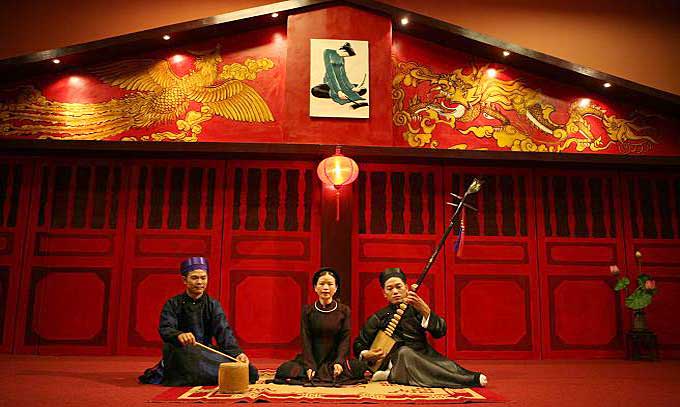Cultural researchers and devoted dancers of Ha Noi are making every effort to collect and conserve ancient dances of the old capital city of Thang Long, which are at risk of slowly fading into obscurity.

The dances, imbued with historical significance and demonstrating humanity’s worldview, are closely connected with the spiritual life of locals and the cultural value of the capital.
Apart from serving spiritual and beliefs activities, dances are also a form of highly aesthetic performance art.
According to Associate Professor Dr Do Thi Hao from the Ha Noi Association of Literature and Arts, the dances reinforce traditions and create memories.
“Just imagine how boring festivals will be if there is no singing and dancing,” she said.
People’s Artist Ung Duy Thinh stressed that it is necessary to preserve and promote Ha Noi’s ancient dances in a bid to conserve the country’s traditional arts.
Ha Noi has many ancient dances closely linked with the city’s history that fall into three categories: folk, royal and religious dances.
Some of the dances, however, have withered under the impacts of time and historical upheavals. Only about 30 dances still remain intact; mostly folk dances that take place in traditional festivals in villages around Ha Noi.
One of the unique dances, associated with the spirit of Thang Long ancient capital, is “chay co” from Trieu Khuc village, Thanh Tri District. The dance is performed during village festivities where amateur artists hold flags, dance and run to the boisterous sound of drums and castanets. The dance displays the power of the solidarity of the Trieu Khuc villagers in their fight against enemies.
Meanwhile, Phu Nhieu village of Phu Xuyen district is famous for the “bai bong” dance, which is a special form of “ca tru”. Dancers sport a special hat with a cotton ball glued on top; the dance is named after this particular hat. In Vietnamese, “bong” means cotton and “bai” means a way of doing things. While swirling around, dancers continuously unfold two large Chinese-style fans and loudly sing “ca tru” melodies. The dance reflects the daily life of farmers and praises love.
Dancers are backed up with at least eight traditional musical instruments, including two big drums, a “dan day” (bottomless lute), a “ty ba” (four-string lute), a three-chord lute, a “phach” (a bamboo instrument with two wooden sticks), a gong and a cylindrical drum. Since setting up a stage for a “bai bong” dance troupe is very expensive, only powerful “giao phuong” (large communities of “ca tru” performers in each locality) can afford it.
Aside from the aforementioned dances, the ancient capital city of Thang Long and modern day Hanoi have been the cradle of various religious dances such as “luc cung” - a six floral lamp worship offering - and “bo bo” of Dong Anh district as well as the dragon dance of Phu Dong village, Gia Lam district.
In a bid to preserve these unique cultural traits, the Ha Noi Dancers’ Association has cooperated with relevant agencies over the last 15 years to implement a project on restoring and promoting the ancient dances of Thang Long-Ha Noi. Under the project, amateur dancers from villages in Hanoi are gathering to revive ancient dances that have been forgotten and bring them to local stages.
Apart from arranging ancient dance festivals, the association is also filming videos of traditional dances and preparing to publish a book titled “Thang Long-Ha Noi Ancient Dancing Art”, which will introduce 50 dances